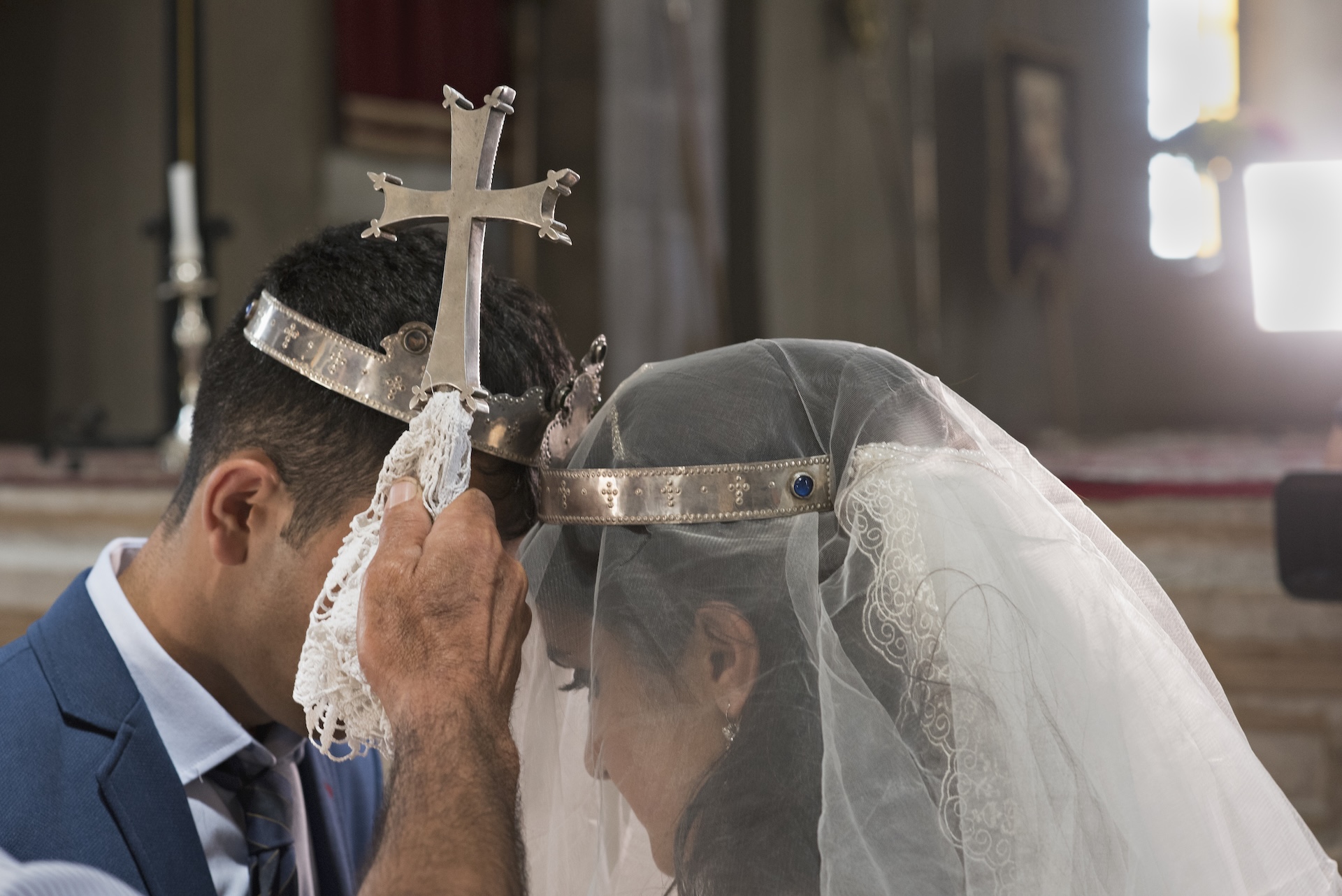
No wedding, whether in Armenia or among the diaspora, is complete without the bride and groom being crowned. Only the design of the crown varies, ranging from a simple band to an ornament adorned with gemstones, mimicking those of worldly royalty.
However, most commonly nowadays, it takes the form of a braided ribbon made of two cords, one red and one white. In all cases, the crown serves as a reminder of the first Christian royal couple, Tiridates IV and his wife Ashkhen. The two newlyweds thus become the king and queen of their home.
Forehead to forehead, hand in hand, they also embody passages from the Bible where it is said that a man shall leave his father and mother to be united with his wife, and the two shall become one. The hand holding the cross belongs to the godfather, known as the “brother of the cross.” Unlike modern witnesses to a wedding, Armenian tradition dictates that the godfather and godmother chosen by the couple should themselves be a married couple, accompanying the bride and groom from the preparation of the ceremony and later throughout their married life. A custom that prevailed for a long time had it that the “brother of the cross” would also serve as the godfather to all the couple’s children.
Following the crowning ritual, the priest offers the newlyweds a cup of wine to share, referencing the Wedding at Cana. During the celebrations after the religious ceremony, the traditional Armenian bread, lavash, sometimes plays a symbolic role. A thin flatbread is placed on the bride’s and groom’s shoulder as a way of wishing them a fertile and prosperous future.